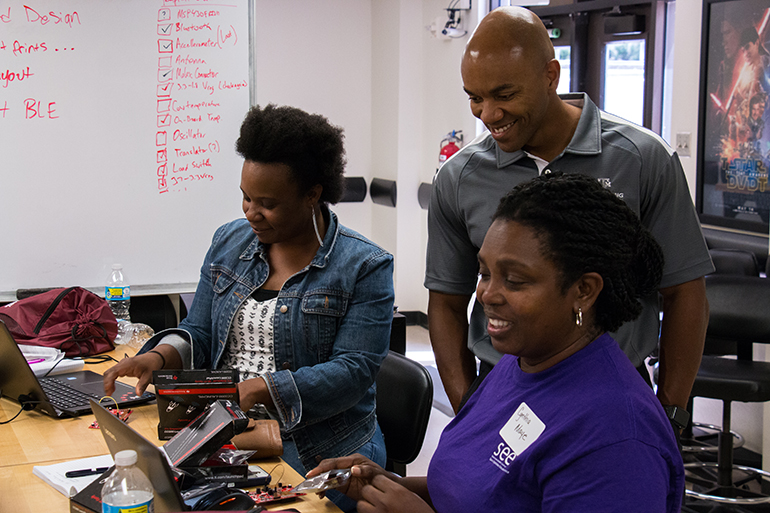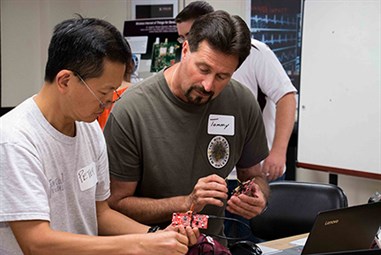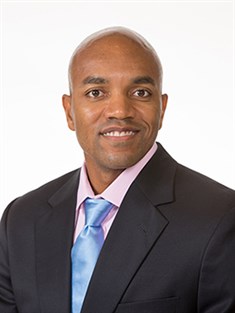
The future needs more scientists and engineers - how do we inspire kids today to become them?
The idea
In September 2016, four researchers at Texas A&M University were awarded a $1 million National Science Foundation grant to promote interest in science, technology, engineering and mathematics (STEM) careers.
 In partnership with Blinn College, the funded project "Connected STEM - Promoting STEM Education through Connected Devices and Building Automation" is a three-year Innovative Technology Experiences for Students and Teachers (ITEST) grant focused on encouraging middle and high school students to learn about STEM and the types of careers paths those fields offer.
In partnership with Blinn College, the funded project "Connected STEM - Promoting STEM Education through Connected Devices and Building Automation" is a three-year Innovative Technology Experiences for Students and Teachers (ITEST) grant focused on encouraging middle and high school students to learn about STEM and the types of careers paths those fields offer.
The Innovative Technology Experiences for Students and Teachers Program is part of the NSF’s Directorate for Education & Human Resources, whose goal is to achieve excellence in U.S. STEM education at all levels in order to support the development of a diverse and well-prepared workforce. ITEST grants specifically support research on the design, development, implementation and selective spread of innovative strategies for engaging students in technology-rich experiences for the promotion and increased awareness of STEM and STEM occupations.
Grant recipients Dr. Michael Johnson, Dr. Joseph Morgan, Dr. Jay Porter and Dr. Matthew Kuttolamadom are all professors in the Department of Engineering Technology and Industrial Distribution. Dr. Jennifer Whitfield and Dr. Bugrahan Yalvac are in the Department of Mathematics and Department of Teaching, Learning and Culture, respectively.
The project is an interdisciplinary collaboration between the Texas A&M College of Engineering, College of Science and College of Education.
To promote STEM in classrooms, researchers knew that they had to start with the biggest influence on students' lives every day - teachers.
Teaching the teachers
Last summer, 12 teachers from across Texas were invited to take part in an all-expenses-paid, two-week STEM training workshop where they would learn concepts that could be easily relayed to their students.
Dr. Jennifer Whitfield, director of aggieTEACH from the college of science, helped engineering technology and industrial distribution department researchers reach and recruit teachers through a highly competitive process.
"We had 100 applicants, but only 12 were selected for the workshop," said Whitfield. "These teachers wanted to be here and were really committed and engaged."
Each teacher received free equipment for his or her classroom including STEM software, a new 3-D printer and even internet of things measurement devices.
How did the workshop go? In short, phenomenal.
Teachers participated in a range of lectures and hands-on learning activities centered on building automation, the internet of things, the engineering design process and additive manufacturing.
"Dr. Johnson's team has taken these four areas and put them together in such a way that secondary educators have the ability to create curriculum from it," said Morgan.
Dr. Cynthia Maye, a sixth-grade science teacher at Burbank Middle School from Houston, said the experience was truly eye-opening.
"I could not fathom that I was going to learn this much in this amount of time," Maye said. "To know that we took stuff back with us that the kids can touch and learn from is really exciting."
Once the workshop was over, teachers returned to their schools and began developing their newly-learned STEM curriculum, which they are now teaching this spring. This may sound like the end of the project but, in fact, is just the beginning.
One year down, two to go
Johnson, engineering technology and industrial distribution department associate professor and the grant's principal investigator, shared his thoughts on the progress of the three-year-long project.
"I think we had a lot of success over the summer. We're at the point now where the teachers are implementing their curriculum into their classrooms and we are collecting preliminary data," said Johnson.
Going forward, all teachers will be getting visits from industry leaders who will speak to students, facilitate building automation activities, as well as come together for a family STEM night where students can share what they have learned.
Johnson wanted to express his gratitude to industries such as Texas Instruments who donated over 200 LaunchPads to the teachers from the workshop so that more students could get involved with internet of things activities. Other companies that supported the project include Schneider Electric and National Instruments.
After teachers finish the program this spring, Johnson and his research team will welcome a brand-new set of teachers in the summer to repeat the entire process. Once that is completed, there are plans for a STEM camp in South Texas for a large number of students and researchers who will be able to facilitate a variety of hands-on activities.
The future
One of the most exciting aspects of this project is the potential for it to become a new standard of teaching STEM in classrooms, not only in Texas, but potentially the rest of the nation and even the world.
"Now that the teachers have this capability and understanding they can incorporate it into their classrooms for a long time," said Johnson. "This self-sustaining aspect is something that we want to build off of by expanding the scale to more teachers in the future."
 Engineers and STEM professionals are in high demand now, and this need will only increase. Johnson stressed just how important it is that we spark an interest in young people today so they can be the scientific leaders of the future.
Engineers and STEM professionals are in high demand now, and this need will only increase. Johnson stressed just how important it is that we spark an interest in young people today so they can be the scientific leaders of the future.
"Everything is an engineered product, so whether that is doing healthcare technology, water resource management or even creating drugs to combat illnesses, all of these things are in the purview of STEM," said Johnson. "You can impact people's lives and make the world a better place."